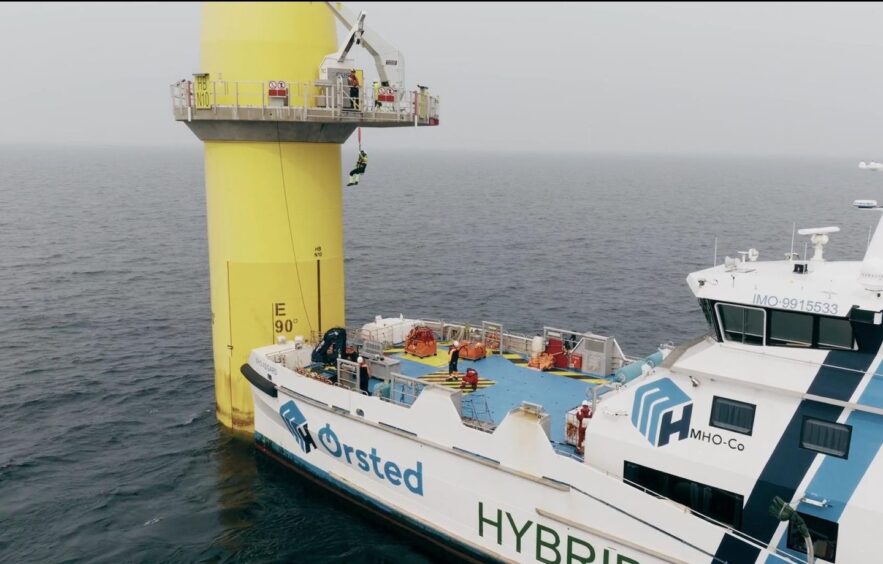
Inverkeithing-based Pict Offshore has completed 10,000 personnel transfers on Orsted’s Hornsea 2 offshore wind farm since putting its Get-Up-Safe (GUS) system into service in 2022.
The GUS systems lift and lower personnel between crew transfer vessels (CTV) and the external platform of the wind turbines.
Hornsea 2 was the first ever wind farm to completely remove boat landings and access ladders from its foundations, replacing them with 165 GUS systems.
The GUS system aims to solve a key safety challenge when working with offshore wind turbines. When technicians step from a bobbing vessel onto the ladders typically attached to the base of the turbine, there is a risk of accident, including slipping and being crushed against the ship.
Orsted managing director offshore for UK and Ireland Duncan Clark said: “Worker safety is our highest priority at offshore wind projects around the world.
“The deployment of the GUS systems enhances the safety and flexibility of operations, particularly in challenging far offshore environments, and is a pioneering example of how we successfully deploy new technology to help improve the wellbeing of our technicians and project teams.
Pict Offshore’s GUS system has been installed on several other projects around the world, including Orsted’s Southfork, Revolution and Sunrise wind farms in the US.
It also signed deals with foundation manufacturer Sif to integrate the GUS system into new monopiles and partnered with Maersk Training to help instruct workers in the use of its system at US offshore wind farms.
Pict Offshore is a joint venture between Orsted, and Limpet Technology, a Scottish height safety innovator.
Limpet initially tested the technology on ORE Catapult’s 7MW offshore demonstration turbine at Levenmouth in Fife.
Pict Offshore managing director Phil Taylor said the firm was “continuing to refine the design”.
He said: “These learnings are being carried through into the next generation GUS system currently under development which we expect to release next year.”
Recommended for you

